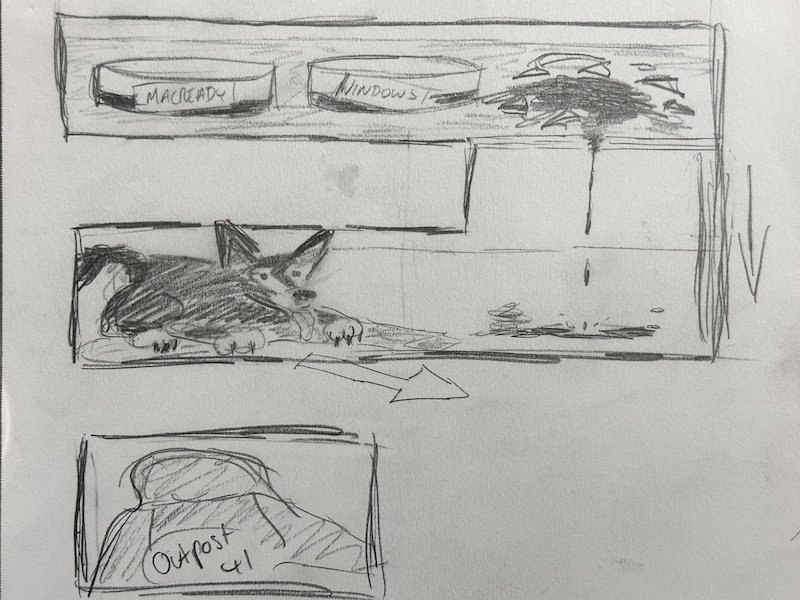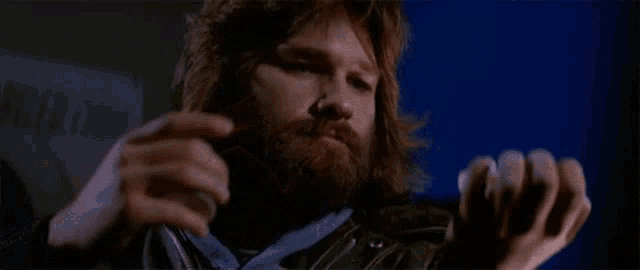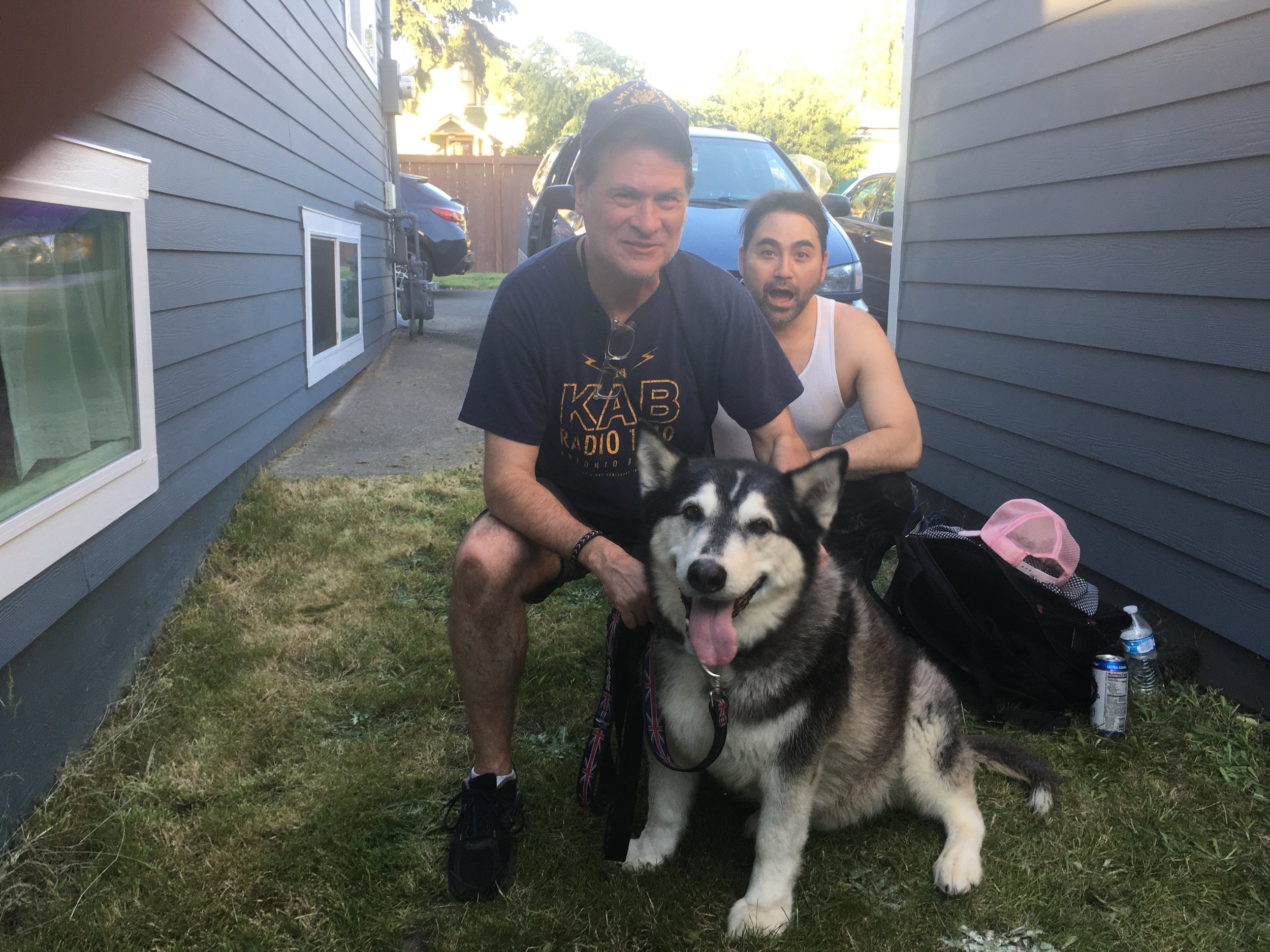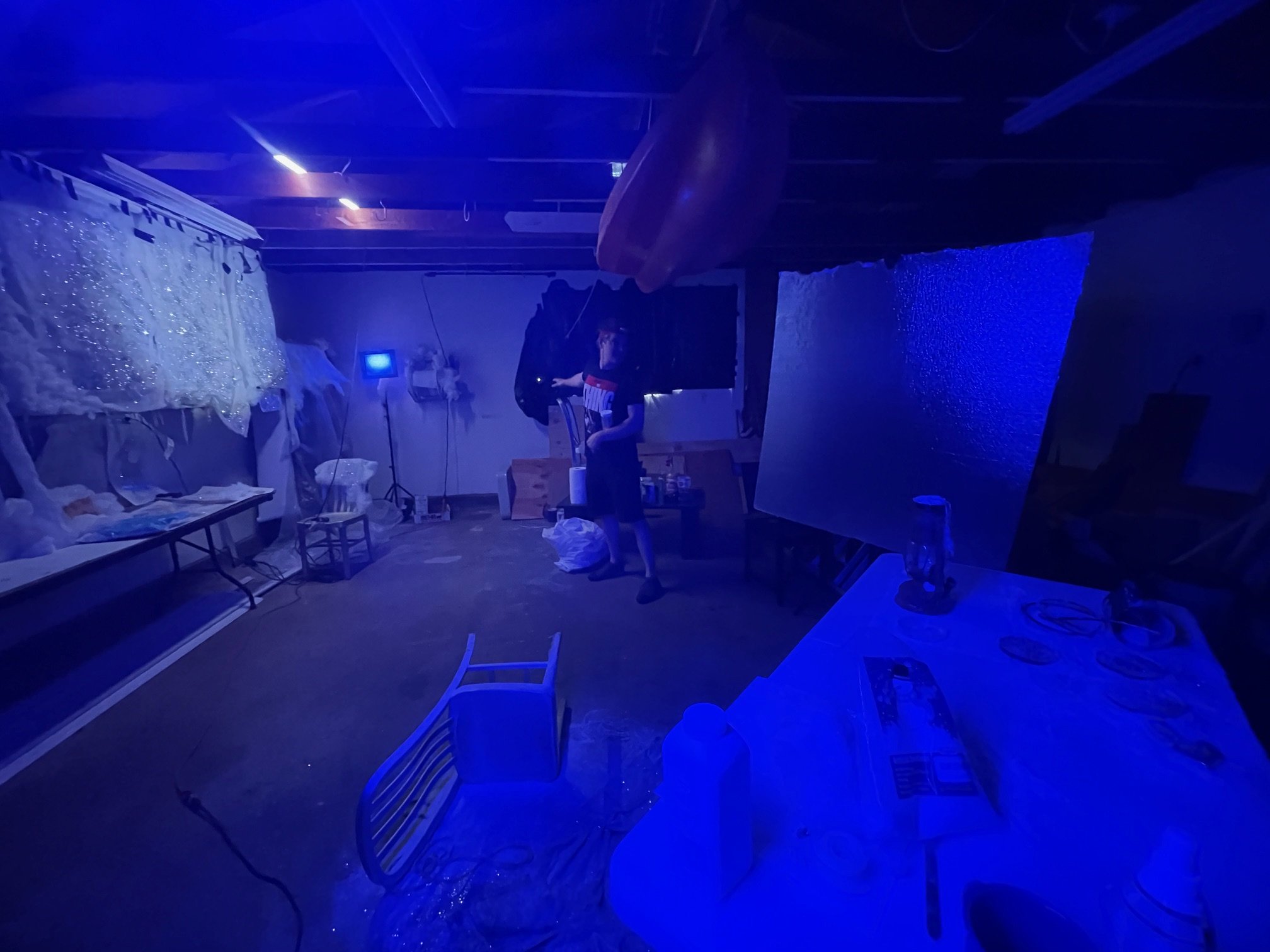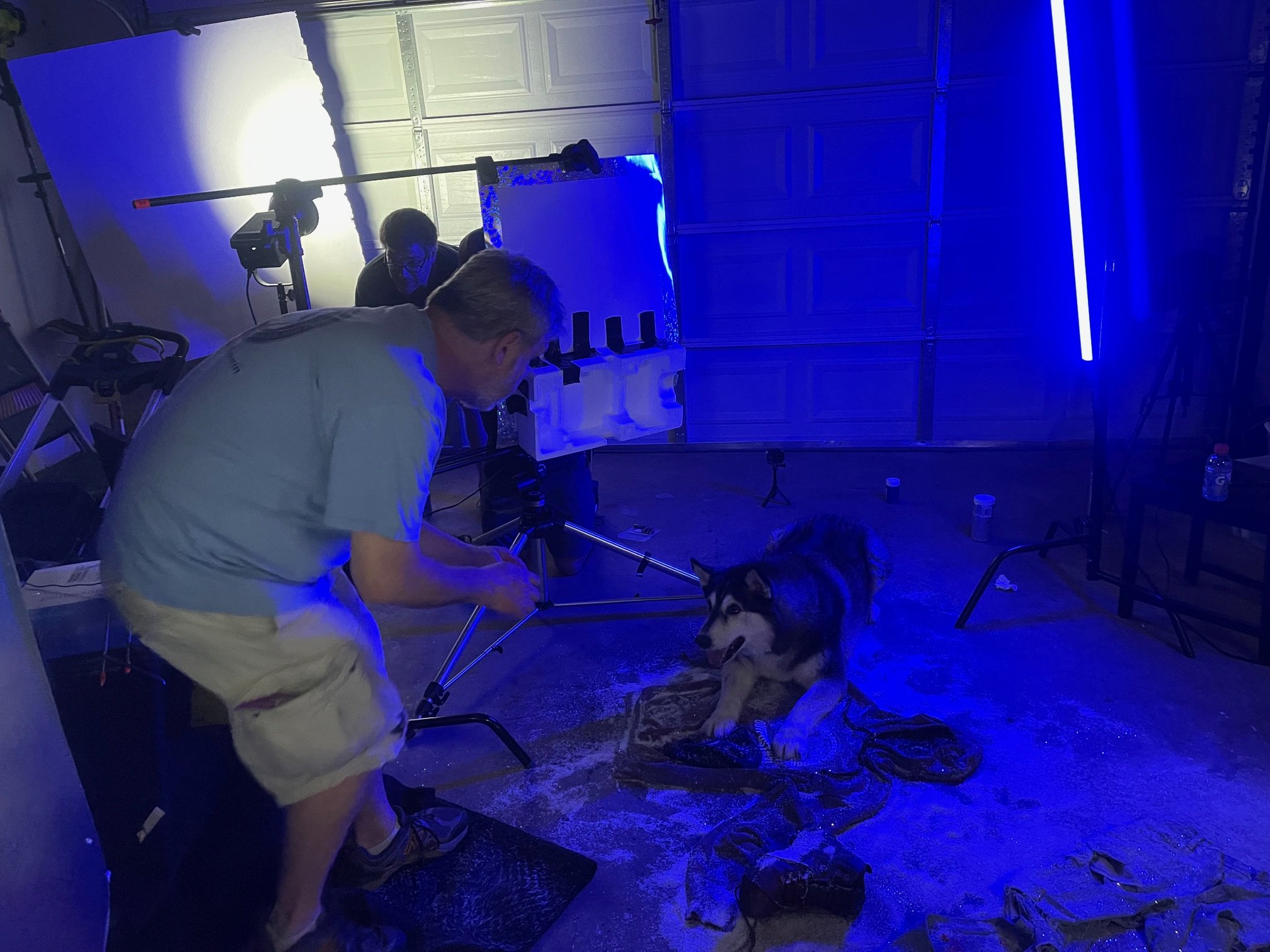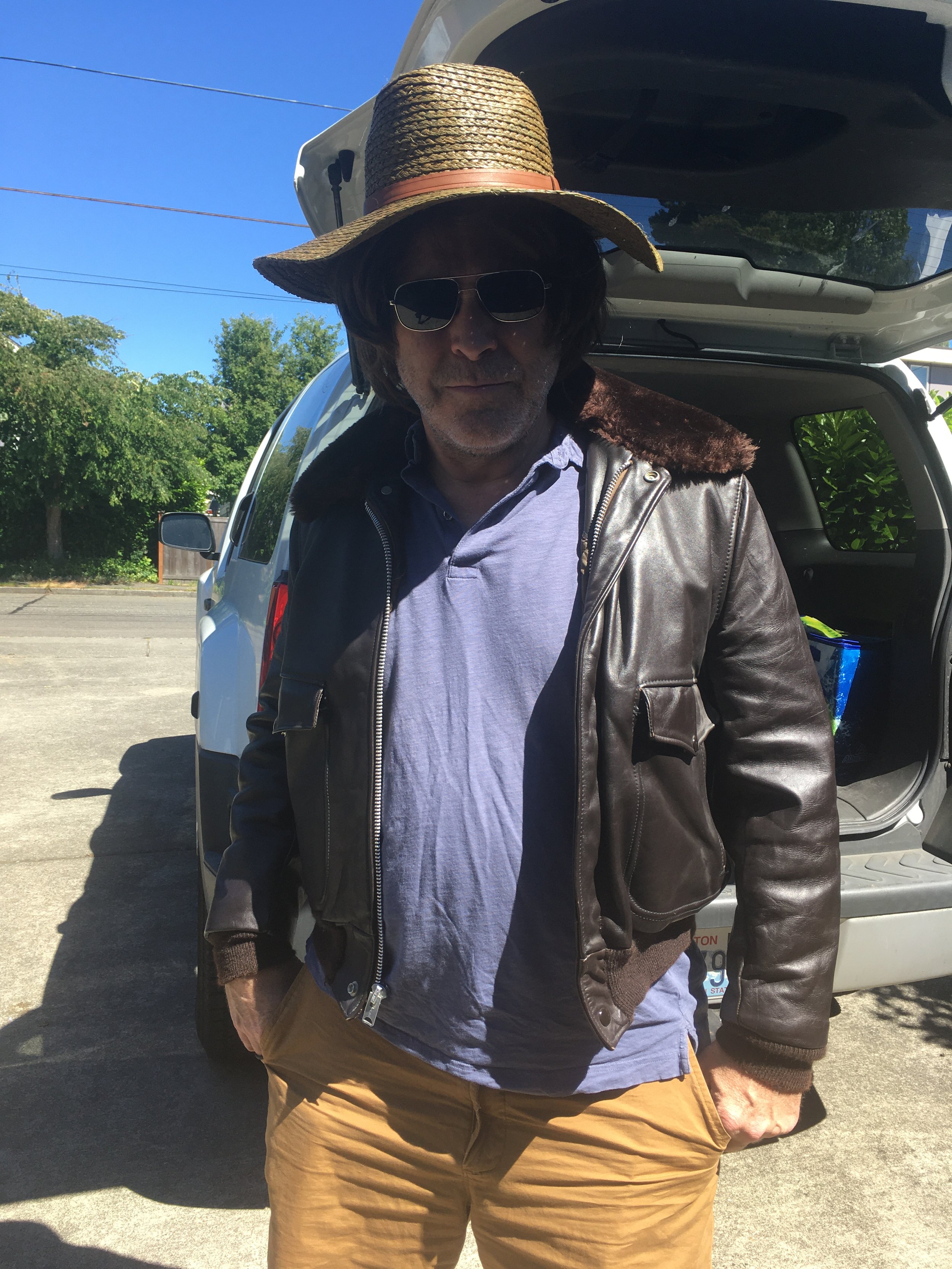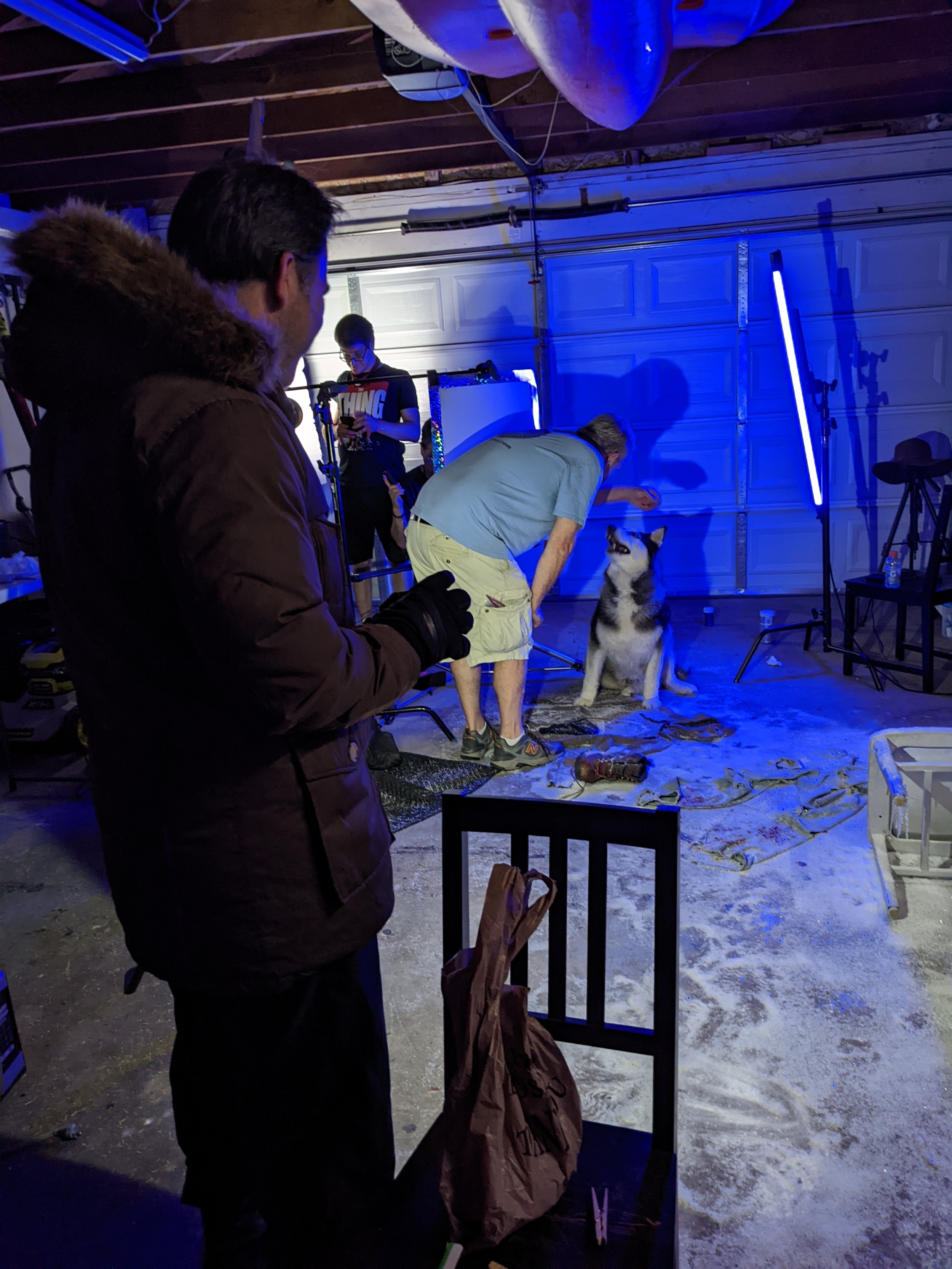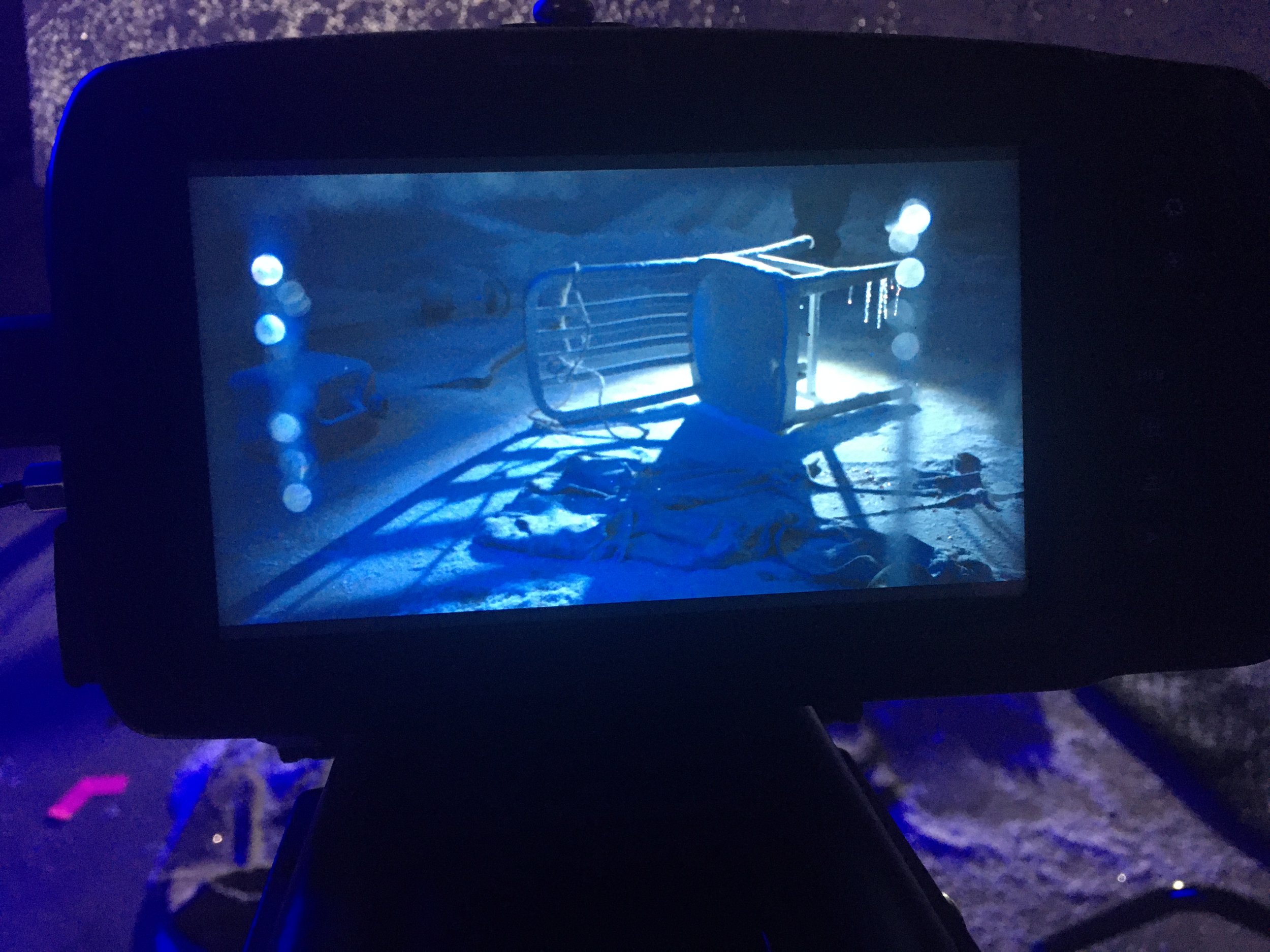A Cold Day In Hell
When we set out to create a “sequel” to John Carpenter’s THE THING to promote movie memorabilia provider LAST EXIT TO NOWHERE on no budget, we knew that we were biting off a lot. The concept was simple: pan along some Petri dishes calling back to the 1982 film, as a pair of explorers enter the decimated science outpost. As they scour the locale, tilt down to reveal a discovery - somehow a dog has survived this chaos, then the dog exits frame revealing some merch. Just a few problems; we had a very limited budget and for the most part, a two-person crew. How were we gonna pull this off?
The easy part was the merch, we already had a coffee mug, and a very well worn hoodie, now we just needed a location, a couple of props, a ton of snow, and a Malamute that could act. Did I mention we didn’t have any money?
Danny Cork’s storyboard concept.
We decided to shoot the spot on a long lens with a shallow depth of field. By keeping our focus very shallow we only need a little bit of convincing snow, while we could imply the rest, but where could we film this? Naturally, we called on our good friend and fellow filmmaker Sam Abrams to see if we could film in his garage. Sam had come through for us on a couple other projects, and Sam being a mensch, said “Of course.” We took a day to prep, since all lighting and art department was done by Danny Cork and myself.
Kurt Russell in John Carpenter’s THE THING.
We placed a table in the foreground, with props referencing one of the film’s climactic scenes, including a coffee mug that is sold at LAST EXIT TO NOWHERE, then sprinkled it all with some fake snow. The finishing touch was some cheesy fake icicles hanging off the edge of the table. Remarkably keeping the focus so shallow, these holiday decorations look pretty convincing. Then we littered the floor with more carnage, an axe, a gasoline can, etc. Unfortunately much of those story telling details would get lost in the final cut, and finally the product shot, an Outpost #32 hoodie.
For the background… I honestly didn’t think this was going to work, but Danny was hellbent on proving me wrong. He decorated all the surfaces with sheets of puffy cotton, and then for that extra touch he sprayed glue on them, and tossed silver glitter into it. It looked like ass to the naked eye, but on camera with the lights turned off, when you panned a flashlight across it, it glistened like icy blue gold.
Speaking of flashlights, that was the game plan for lighting the product shot. Two explorers would enter the scene, as they move through the background, they motivate the camera move, and splash the scene with light as they sweep the scene with their lanterns. We threw up a few overhead lights to just give a sense of the space, hung a flat panel light to imply a window in the background, another small amount of light to give some detail to the foreground elements, and then we stationed a crew member on an off-camera light who panned a flag to suggest outside light spilling in as our cast enters the space.
Everything was looking great, and even better as we did some dry run-throughs on our iPhone cameras. Now it was time to throw it up on the production camera and have a look. We were shooting on the black magic which delivers a terrific image, there was just one slight problem… actually two. First off, it doesn’t have auto-focus, and without a crew, this was going to be a challenge as we had to rack focus from the foreground images on the table top, to the Malamute under the table. The other issue is that while the Black Magic is is a great camera, it’s not really designed to work on a gimbal which is what we were using to achieve our shot.
I’d never operated on a gimbal before, but was excited for the opportunity to do so. As expected, it took a bit of time to get the camera balanced on the device, but it wasn’t as stressful as I’d heard that it could be. There was glitch in the ointment, so I had to power down the gimbal, and turn it back on. When I did so, it kicked back to wake like C-3PO waking from a nightmare, and it snapped off the battery cable. Thankfully we weren’t shooting until the next day, and also was happy that our local camera store, Glazer’s was open and had the cable we needed.
When I returned from the camera store it was time to do a dry run with the Black Magic on the gimbal. Simple move, track along the table edge, then pedestal and tilt down to the Malamute and hoodie. Easy. Wrong. I can easily chalk much of this up to my inexperience with the apparatus, but what we really needed for this shot was a dolly (with such a shallow depth of field, it was crucial to keep the focal distance on the table top exact). We realized that the gimbal wasn’t going to work for what we needed.
After a quick huddle, the new game plan was to take advantage of Sam’s camera slider, and break the shot into two, and hide the cut in post-production. Shot 1 would be a dolly along the table top, then start a tilt down. Because we were so close to the edge of the table, Shot 2 required us to move the camera back, start with a slight pan, then tilt down to the dog and product shot with a new focal plain.
Thankfully we had an entire day to road test this by ourselves, and on Day two we brought in our cast and our dog Wizzard, who starred in such local shows like Z NATION. After Wizzard was acclimated to the set, we smoked it, brought in our cast, and shot the second half of the take first so we could release Wizzard. After we all hugged Wizzard goodbye, we filmed the top half of the shot. And a shout out to our fellow filmmakers Matt Dy and Dan Gildark who stepped into winter wear to be our cast on the hottest day of the summer. We were done. Now, the easy part, post-production. All we had to do was hide that cut in the tilt down. This was going to be the hard part.
Danny and I went through all our takes and decided on the best take for Shot 1 and Shot 2, tossed them into the timeline, found a little wipe that could hide the cut, and … Viola! It looked awful. I made a reference file and shared it with our trusty cadre of editor friends, “Anyone know how we can fix this and make it look like a single take?” We received a few suggestions, and a generous offer from Rich Phelps over at Rumbl Media, “Send me the footage.” After a few days Rich gave us the good news, “I think I can make this work, but… not with these takes. Send me the rest of the footage.” Rich then went through all of our takes and finally found a combination of takes that allowed Rich to create a seamless transition. Although we lost a few of our favorite things including a beautiful glisten off the snow, and the aforementioned storytelling props of an axe and gasoline tank, we were to grateful to Rich for salvaging what could have been a great deal of hard work down the drain. Rich also then went on to do our color grade. Hire him, he’s rock solid.
We loved this image of the chair with the icicles hanging off of it, but unfortunately it got lost in the cut.
So what’s the big takeaway here? It’s either make sure you have the right tool for the job, or I guess you could say where there’s a will there’s a way. Either way, this is one of the things that we love about production, every chance to be on the set is an opportunity to learn something new and a great reminder that the best laid plans of mice and men often go awry.
